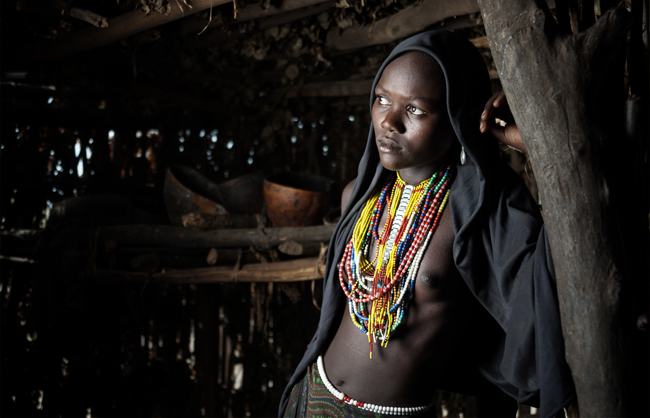Omo Valley
Where: Ethiopia
When: 2013
Nestled in southwestern Ethiopia, near the borders of Kenya and South Sudan, the Omo Valley is one of Africa’s most culturally rich and ecologically fragile regions. For thousands of years, it has been a crossroads of human migration—now home to over 200,000 people across at least twelve distinct ethnic groups, including the Arbore, Ari, Bena, Bodi, Nyangatom (Bume), Daasanech (Galeb), Dorze, Hamer, Karo, Konso, Mursi and Surma (Suri).
Most of these communities are semi-nomadic agro-pastoralists who rely heavily on the Omo River for survival. Its seasonal floods nourish the soil, allowing the cultivation of sorghum and maize in an otherwise semi-arid climate. Cattle play a central role—economically, socially, and spiritually—and are often the only sustenance when rainfall and crops are not abundant enough. Despite inter-ethnic cooperation and shared grazing rights exists, resource scarcity often fuels conflict.
For generations, herding and agriculture were the foundation of life in the Omo Valley. But about twenty years ago, tourism began to alter this balance. Tour operators arrived in growing numbers, seeking contact with communities that had long remained isolated. As the outside world took interest, many tribal groups came to realize that their unique appearance (ochre-toned skin, lip plates, body painting for example) could be monetized. Handicrafts, scarification, and ritual adornments, once embedded in ceremonial life, became tourist spectacles, stripped of context and meaning.
At the same time, the arrival of Christian missionaries disrupted traditional beliefs, further eroding ancestral customs.
Additionally, the construction of the Gibe III dam in 2006, followed by a vast network of irrigation canals and land concessions to foreign agribusiness, has diverted the vital water from the Omo River and taken away fertile lands and grazing grounds, originally intended for indigenous peoples' plantations. Experts warn that these interventions could have an enormous impact on the delicate ecosystem of the region, leading to food insecurity and escalation of inter-ethnic tensions.
In this fast-changing region, it is to be hoped that the exposure the tribes are currently receiving through photography, tourism, and media will become an advantage—offering them a voice on the global stage, one that might help preserve their land and environment, their way of life and dignity, and the core of their culture.



































